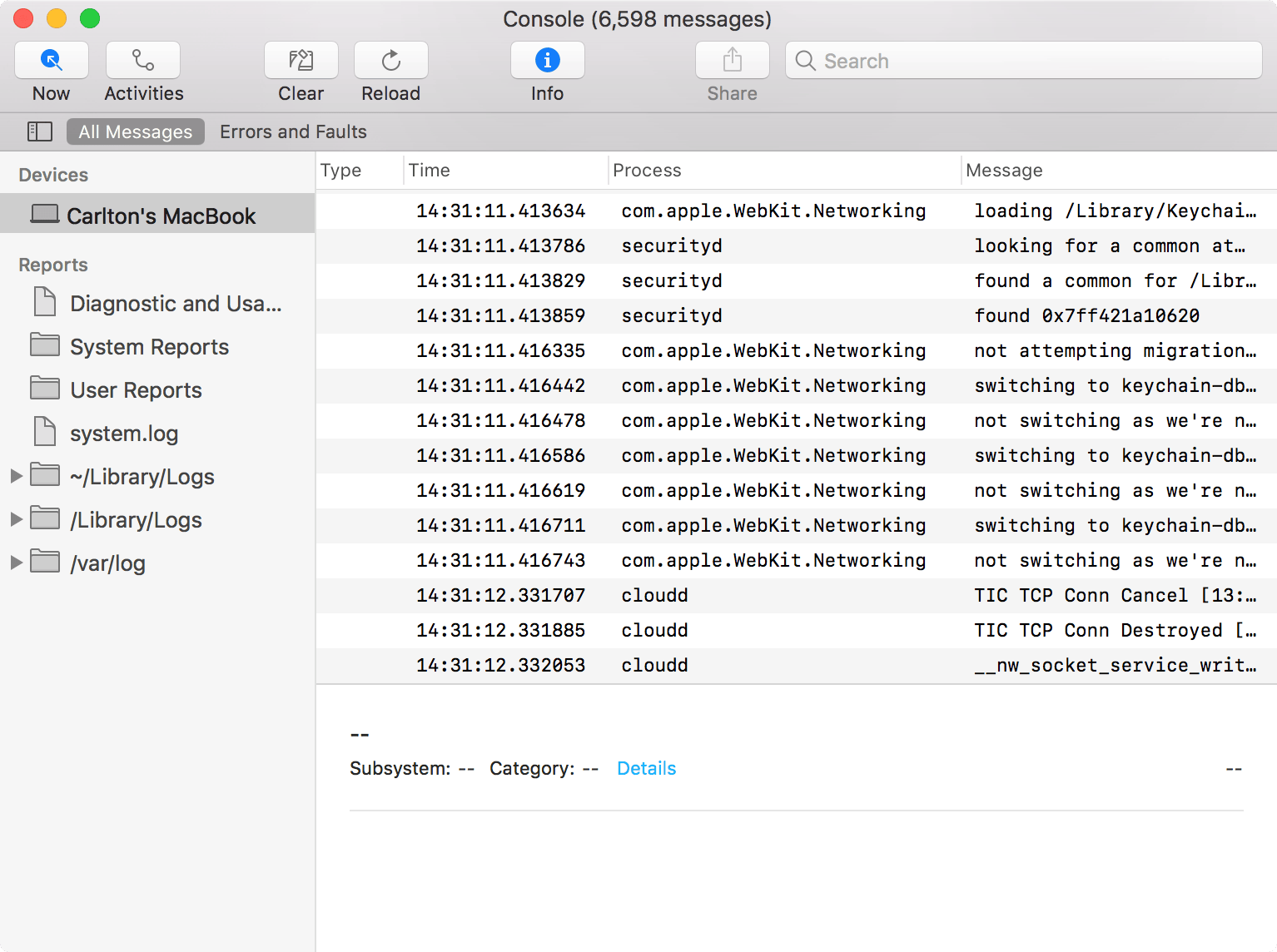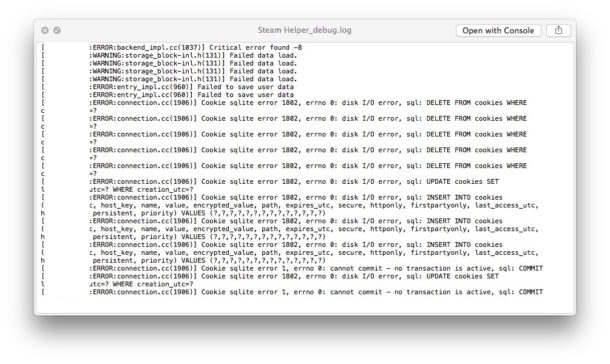
Log show -predicate 'eventMessage contains "Hello Logs"' -last 3mįiltering the log data using “eventMessage CONTAINS “Hello Logs”” shows us that our entry appears as follows:

We’ll explain those a bit later, but think of it as query parameters – here, we’ll specify to look for “Hello Logs” in eventMessage: In the below example, we’ll just run a scan of the last 3 minutes, using the –last option, and then providing a –predicate. That “Hello Logs” string we used earlier is part of a message that you can easily view using the ‘log show’ command. To get started, first check out the man page: The log command provides another means of reading those spiffy new logs. Console has been updated with a new hierarchical capability and the ability to watch activities, subsystems, etc. As with all binary files, you’ll need new tools to read the files.

Logs are now stored in the tracev3 formatted files in /var/db/diagnostics, which is a compressed binary format. These are replaced with the os_log, os_log_info, os_log_debug, os_log_error, os_log_fault, and os_log_create APIs (which correspond to various levels of logs that are written). If you’re a developer, you will need to note that all of the legacy APIs you might be using, which include asl_log_message, NSLog, and syslog, have been redirected to the new Unified Logging system, provided you build software for 10.12 (you can still build as before for 10.11, iOS 9, tvOS 10, and watchOS 3 and below). This isn’t terribly different than how things worked previously. Once written, use the log command to read your spiffy new entries. This is basically the simplest form of an entry: And finally, we’ll quote the entry we want written into the log.

To make the entry easier we’ll tag it with –t followed by the string of the tag. To do so, use the –i option to put the process id of the logger process and –s to write to the system log, as well as to stderr. Below, we’ll write the string “Hello Logs” into the system log. This is because as the logs being created in macOS have gotten more complex, the tools to read and write those logs has gotten more complicated as well.

However, if you are then using tail to view /var/log/system.log then you will notice that you no longer see your entry being written. The logger command is still used to create entries in system logs. As such, an entirely new interface needed to be developed to categorize and filter messages sent into system logs. For the past few releases, Apple has tried to capture everything possible in logs, creating what many administrators and developers might consider to be a lot of chatter. Apple has a number of different logging APIs.


 0 kommentar(er)
0 kommentar(er)
